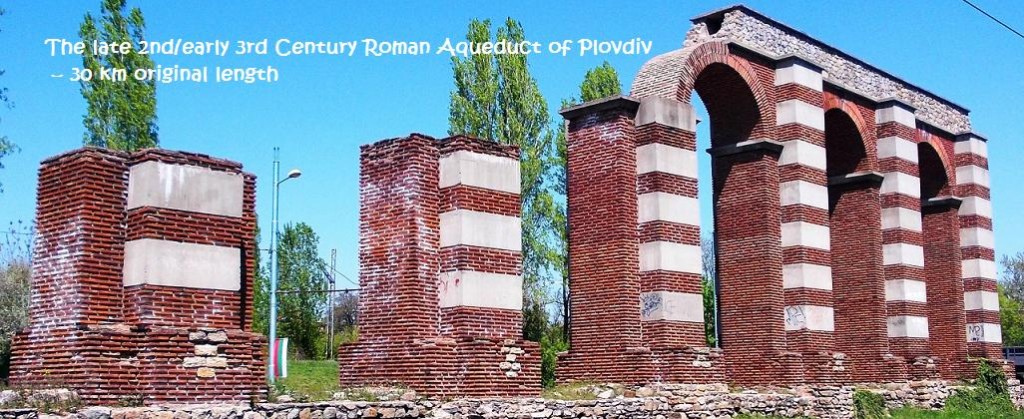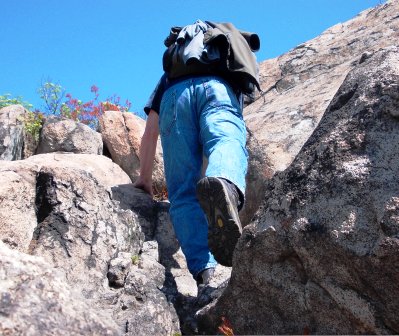An urban adventure — interspersed with nature
Sept. 16, 2015

Plovdiv’s deep and rich history spans over 6,000 years, with earliest traces dating to a late Neolithic settlement, ranking it among the world’s oldest cities. During its long history, it has been conquered, settled and influenced numerous times—by Thracians, Macedonians, Romans, Byzantines, Bulgars and Ottomans, as well as Axis and Soviet control in more recent times.
Plovdiv has been known by many names through the millennia—most notably; Eumolpias ( the mythical Thracian king Eumolpos, son of Poseidon) by the Thracians, Philippoupolis (after its conqueror Philip II of Macedon) by the Macedonians, Trimontium (“The Three Mountains”) by the Romans and finally its current moniker, a variant of other historical names.
The Romans were eager to hold this city because it straddled the Via Diagonalis, an important crossroad of the Balkan region. As with other examples, the feature of the seven closely contained distinct hills is often cited as a particular attraction to the Romans. Over the past century, one of the hills, Markovo Tepe, had been completely excavated for paving stone as the city expanded.
Lucian of Samosata, a 2nd century Greek writer, described Plovdiv as “The largest and most beautiful of all cities”.
During my last — of five total – visits to Plovdiv, on a particularly beautiful late April day, I decided to embark on a trek which would traverse all six hills. Quite a culturally immersive and enjoyable outing it would turn out to be.
If interested in duplicating this little adventure, would advise taking a city bus to the beginning of the route—-as described below;
- Several city bus routes travel west out of the central areas along Hristo Botev Bl. (the main street that passes the central train station). Bus #26 can take you from the back of the Main (monolithic) Post Office – the Trimontsium Hotel stop – directly to the Elin Pelin School – the recommended destination bus stop on Hadzhi Dimitar (just a cloverleaf intersection beyond the end of Hristo Botev) – You’ll now be within sight of the surviving (rather impressive) remnants of the Roman Aqueducts — in the median strip of the active roadway.
- Within sight, across the cloverleaf to the Northeast, you’ll see the first and largest hill, namely Dzhendem Tepe (Youth Hill) – approx. ½ mile (straight-line) distant. Find your way through the cloverleaf where you’ll access the park paths surrounding the mountain. Head diagonally toward the summit. Watch out for the mini-railway and ascend to the summit either via the (obvious) main paths, or, better yet, follow one of the more direct and adventurous routes.
- The Youth Hill is the first of the Plovdiv hills declared a protected area. In 1970 the southern parts of the hill became a national landmark, aimed towards the preservation of the natural habitat of rare plants.
Grab a bench, or a spot—and enjoy the beautiful 360° views from the summit! —Across the city, its environs and also towards the majestic Rhodope Mountains. Set your sights and bearings on “Liberators Hill” – about another ½ mile distant, “as the crow flies”.
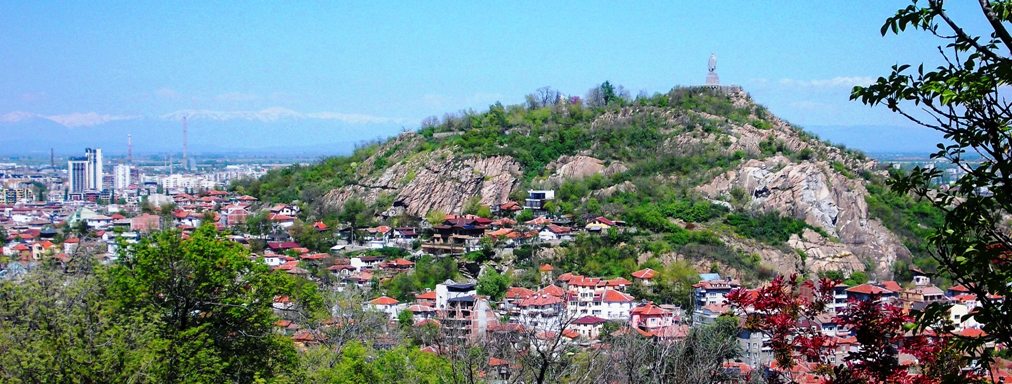
- Descend the northeast side of the Youth Hill and you’ll traverse a great little neighborhood sandwiched between the two hills. Speaking of sandwich, this would be a great time to take a lunch break (there are several sidewalk dining options, weather permitting). An ideal place to take in the rhythm of daily life—minus (other) tourists.

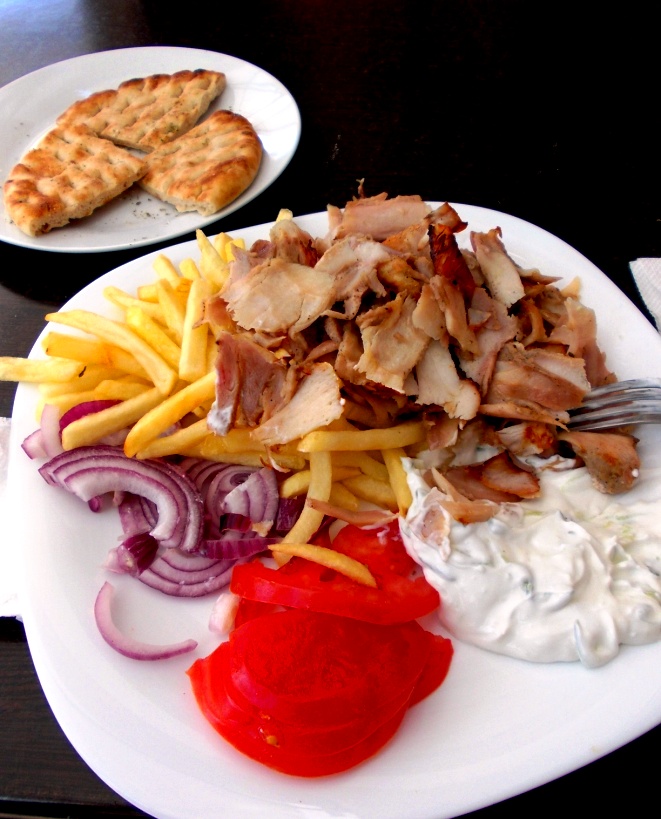
- Continue through a short stretch of neighborhood streets toward Bunardzhik Tepe (Liberators Hill), the second highest hill – along the upper perimeter street ul.“Nikola Petkov” , find a dirt path leading upwards. Towards the top you’ll begin to see the huge Soviet soldier monument “Alyosha” capping the summit. Directly below is a highly revered memorial called The Liberators Monument, built in 1881. The hill is a popular leisure escape for the people of Plovdiv. Relax and enjoy the panoramic shorter range views, especially of the old city center and the smaller hills yet to be conquered.


- Descending the eastern side of Liberators Hill you’ll discover a large network of winding structured walkways. Exit across bul.“Ruski” around the center of the parkland you’ve just descended. Find the intersecting (eastward heading) cross street ul.”Petyofi Petyofi”. Continue directly up this city street (approx. ¼ mi.) and enter the parkland path at the end.
- You’ll now begin the short ascent to the top of Sahat Tepe (Danov Hill). As with most of the other hills, there’s a primary winding walkway, along with alternate paths, all heading upwards toward the initial summit—where you’ll find the famous Clock Tower (orig.ca.17th Century). Danov, along with the two preceding hills, are designated under the protected areas act as Natural Landmarks.

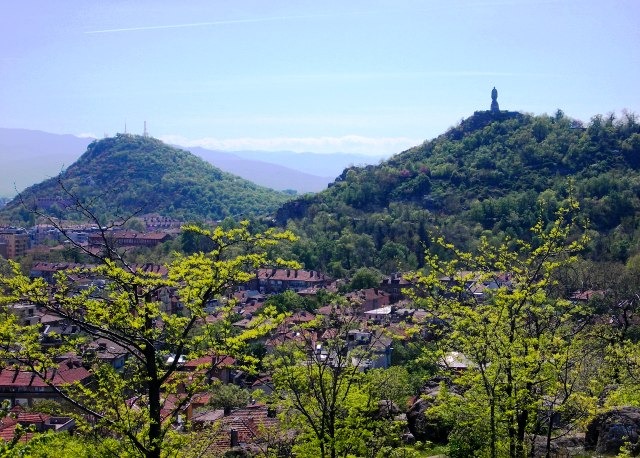
- Nestled directly in the historical heart of the city, Danov affords beautiful close range panoramic views of the remaining “three hills” to the East – a.k.a. The Old Town. The Ancient Roman Theater figures prominently in the view. Great perspective views are also afforded back towards the larger hills that you’ve traversed. Danov’s slightly higher double summit—a bit marred by a communications station—provides the best opportunity for enjoying the views from a boulder top perch. Trails meander between and across the rocks.
- Descend down the walkway between the tower and relay station towards “Knyaz Aleksandar I”, the main pedestrian street directly below. Stop to enjoy the creative street art as you exit the “park”. Yet another excellent opportunity to take a break at a sidewalk café —- rest, recharge and soak in the “rhythms of daily life”.
- Within a 10 minute (to the N.E.) walk—best accessed upon exiting the pedestrian street between the Roman Stadium and Dzhumaya Mosque—you’ll be entering the architectural & historical reserve of the Old Town of Plovdiv, which comprises the remaining “three hills” — in actuality 3 high points on the greater hill that encompasses the beautiful Old Town.
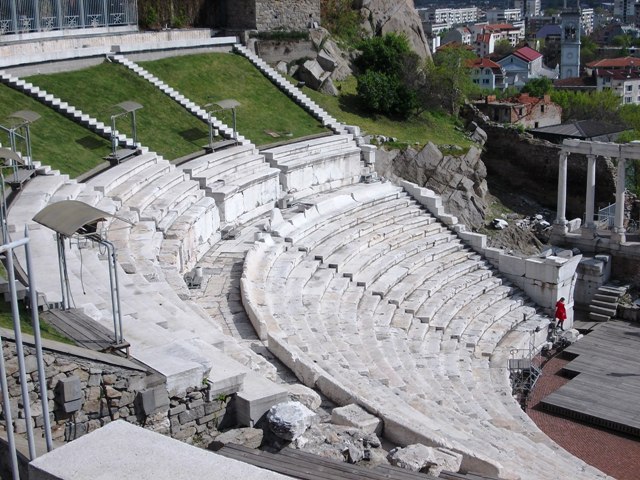
- Dzhambaz Tepe – frames the southern side of the Old Town, with the perimeter affording beautiful long range views towards the Rhodope Mountains. Behind the Academy of Music, Dance & Visual Arts you’ll (hopefully) marvel at the incredibly-well-preserved 2nd century AD Roman Amphitheater, which originally accommodated 7,000 spectators. Still in regular use today!
- Taksim Tepe – comprises the core of the distinctive and beautiful Bulgarian National Revival architecture of the Old Town.
- Nebet Tepe – along with evidence of prehistoric settlement, the remains of the acropolis of the ancient Thracian town Eumolpia lie here. Reconstructions span through the Middle Ages. If possible, enjoy a commanding panoramic view of the sunset from this commanding perch.
A helpful hint: be prepared with the actual Bulgarian Cyrillic place/street names. Take your time——and Enjoy!!
♦ ♦ ♦ ♦ ♦
Highly-recommended Lodging—in a meticulously-restored Old Town Revival House: Old Plovdiv Guest House – Tell Hristo “VagaBob sent me!”
♦ ♦ ♦ ♦ ♦
Plovdiv has been selected as a 2019 European Capital of Culture

